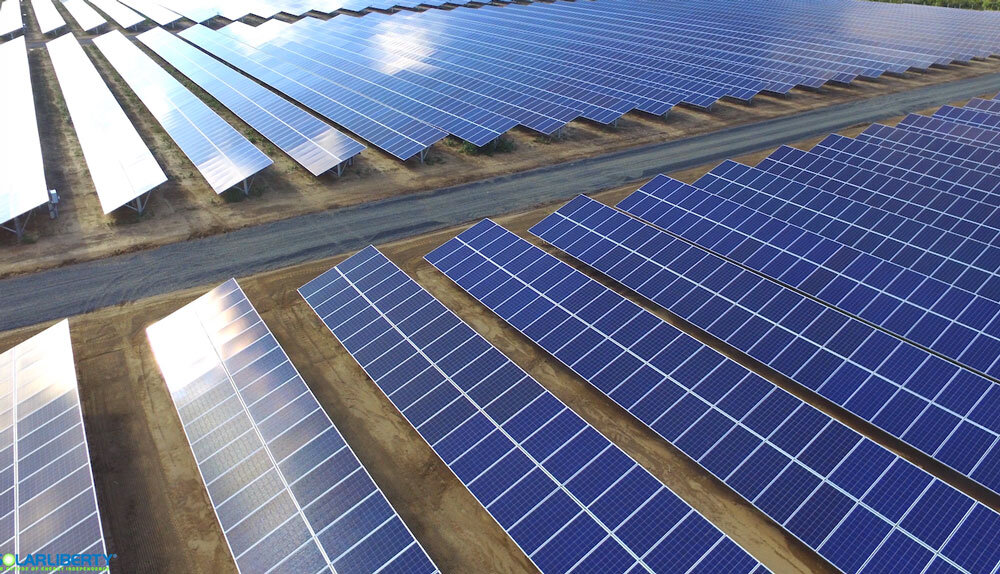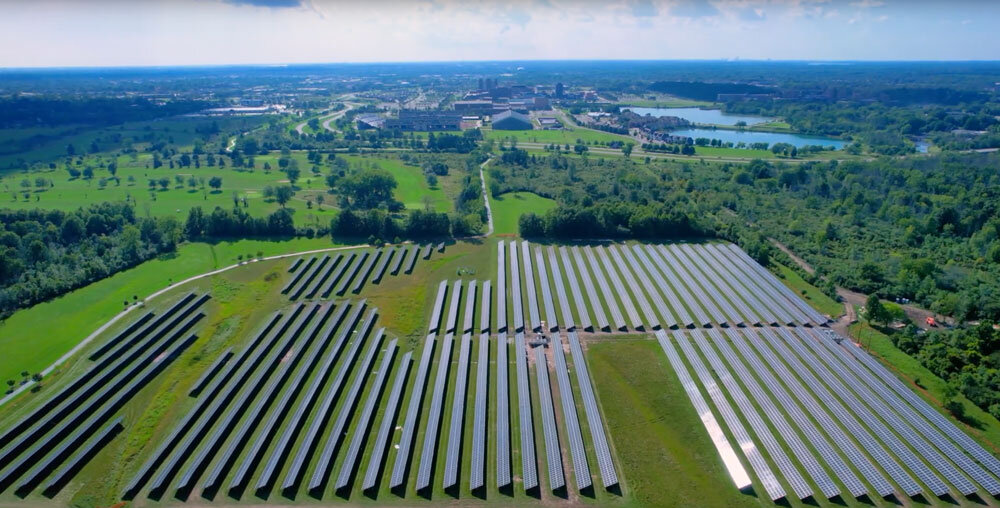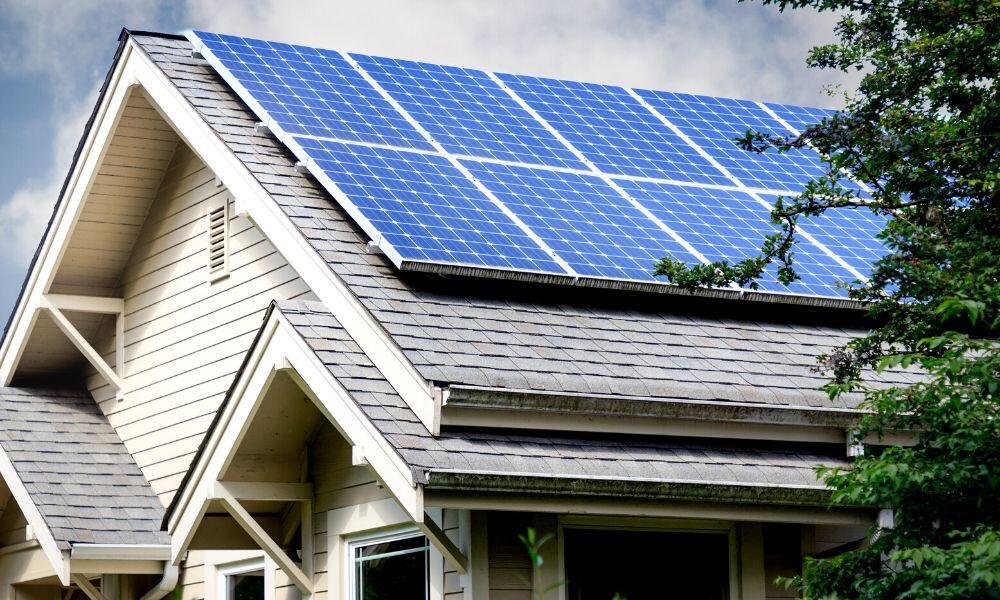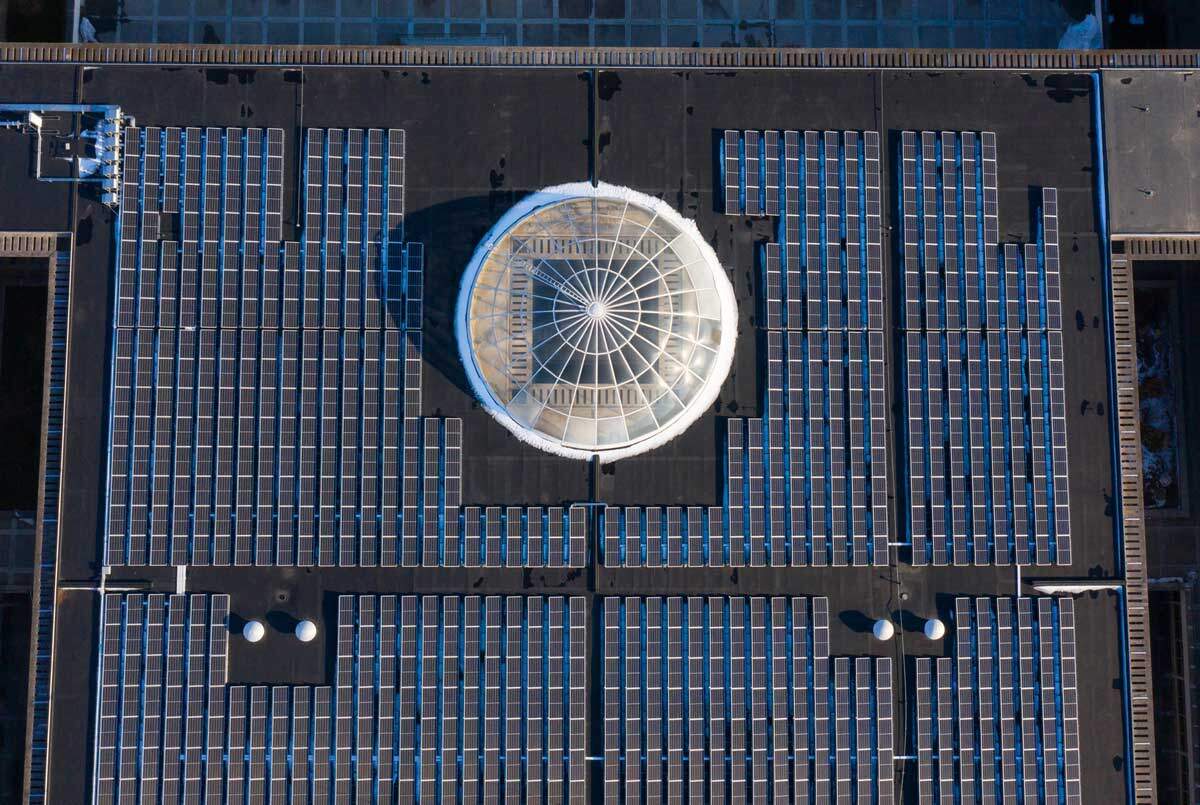How community solar works in Western New York – Buffalo Business First
ByJacob Tierney – Reporter, Buffalo Business First
Hefty state incentives have made New York a hotbed for community solar projects, but the relatively young program may already be reaching its peak.
New York launched its community solar program in 2015, creating a business model for projects that allows residents and businesses to benefit, even if they don’t draw power directly from solar panels. Last year, Gov. Kathy Hochul announced that the state was the top community solar market in the country, and that 70% of total solar installations across the state were community solar projects.
The pandemic slowed development, but now community solar projects are roaring back to life.
“There’s going to be many, many more of these popping up over the state over the next few years,” said Rob Gauchat, vice president for sales and marketing for Solar Liberty in Amherst.
His company primarily does residential and commercial solar projects, but it’s made big moves into community solar over the last few years. It’s working on about 20 community solar projects slated for completion this year, with about 20 more planned after 2023.
Gauchat and others, however, say that dwindling state incentives, changing economic tides and limited grid capacity could cause the expansion of community solar projects to slow once the current wave is completed.
How it works
Developers build solar projects that add power to the public grid. Those developers receive energy credits from utility companies equal to the value of the electricity generated by the solar project. New York state provides additional financial incentives to the developer on top of the energy credits.
A developer, often working in partnership with another company, will recruit homeowners, renters and businesses as subscribers for the project. There’s no up-front cost for subscribers.
Each subscriber is allocated a portion of the solar farm’s electricity production and receives a discount on their electricity bill equal to 10% of the energy credits generated by their share.
“It may not be precisely free money, but it is an easy benefit,” said Matt Eldred, a senior associate with Harter Secrest & Emery law firm in Buffalo who has worked with landowners and subscribers on community solar projects.
The other 90% of the money goes to the developer.
Until recently, subscribers would receive a discount on their power bill equal to the full value of their energy credits, then the entity managing the solar project would bill them for its share. In 2021, New York implemented a net crediting discount in which utilities send developers their share directly, instead of billing subscribers twice.
This has made the process much easier for subscribers and is driving a stronger interest in community solar, said Sarah Baczynski, marketing director for NOCO.
Uncertain future
The New York State Energy Research and Development Authority has gradually been reducing its financial incentives to community solar developers.
For a long time, government incentives were the only way to make solar development economically feasible, Eldred said. That’s gradually starting to change as technology improves.
“Technology makes the panels and the systems more efficient at capturing the sun, and producing more energy to sell, and come closer to break-even,” Eldred said.
The landscape of state and federal incentives is constantly changing, according to Backzynski. This makes it hard to predict the future of community solar, especially since it can take a couple years for a project to move from conception to completion.
“It’s interesting, the timeline in solar projects in as different projects come online, different incentives and credits come on and offline,” she said.
The true limiting factor may be the grid’s ability to handle the rapid influx of new solar energy.
New York is one of only a handful of states with community solar legislation. Its early adoption and fervent support of the practice has made the state a destination of choice for many solar developers.
“There’s so many entities, not just from New York state, but from out of state that have worked to develop these projects,” Gauchat said.
That rush of development has made it increasingly difficult to find good locations for new projects, Gauchat said. The power grid only has capacity for so much solar energy
“Because New York has already pushed so hard over the last few years to develop kind of fast and furious, and has had so much attention from developers in the industry, the open space on the grid is getting to be less and less all the while,” Eldred said.
Though community solar farms are now the “jewel in the state’s crown” when it comes to clean energy, that may not be the case for long, Eldred said.
Community solar farms are typically small. The state recently made it easier for large-scale commercial solar projects to get approval. Large projects will be necessary if the state is to hit its aggressive 2030 climate targets.
Though Eldred doesn’t think community solar is going away, he suspects it may soon take a back seat to other clean energy business models.
Full Article: How community solar works in Western New York – Buffalo Business First (bizjournals.com)





